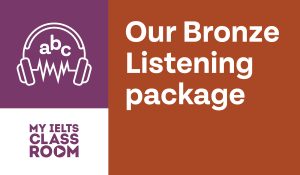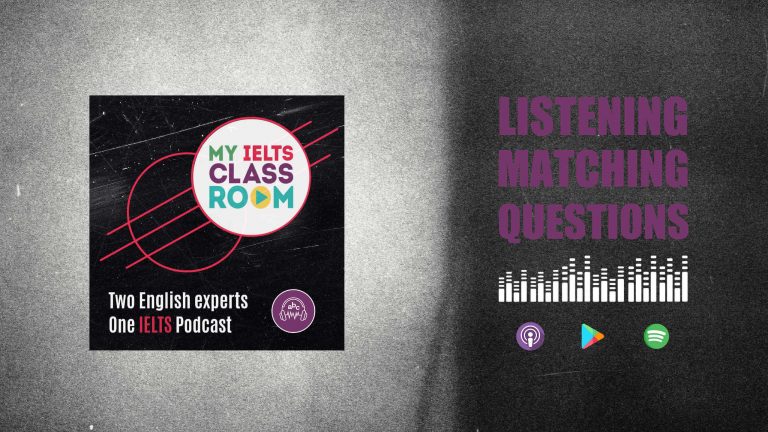
IELTS Listening Matching Questions Made Easy
The matching questions in the IELTS exam should be easy. I mean, you can see the answers – they are just sitting there in the box. So why is it so difficult to match them? Well, that all depends on what the type of matching task you have been given. That’s right – there are TWO types of IELTS listening matching questions – one that focuses on testing your vocabulary, and one that focuses on testing your ability to follow a conversation.
Today Nick and I will break down both types to show you how they work and why they can be so tricky (Spoiler – it is all about SYNONYMS!) Plus, if you like this lesson, then why not also listen to us break down IELTS listening part one and part three in our previous episodes?
Below, you can find a summary of the episode, which includes all of the links to useful materials and the times of each part of the discussion (so you can go directly to the part you want to listen to) 🚀
Subscribe to My IELTS Classroom podcast on Apple podcasts here
Subscribe to My IELTS Classroom on Google podcasts here
Podcast Summary: IELTS Listening Matching Questions
00:00 – 01:49 Introduction – Nick is tired!
01:50 – 04:35 The basic facts about IELTS Matching activities There is pretty much a 100% chance that you will be asked to complete at least one set of matching questions in your IELTS listening test, so let’s start by looking at the basic facts about these questions:
- Box matching questions can appear in any section of the test, but they are most common in parts 2 and 3
- You will be ask to match a numbered list of items from the listening text to a set of options in a box on the question paper.
- Matching assesses either the skill of listening for detail, or being able to follow a conversation between two people or recognising relationships and connections between facts.
04:36 – 06:07 Type 1: One-to-one matching questions I would say that the first type of matching activity is easier than the second as here you are asked to match FEATURES. This means you will have to understand a DESCRIPTION of an object, place, or person and match it to the same DESCRIPTION in the box.
You will not normally hear the same words in the recording so it’s important to recognise synonyms. In fact, if you do hear a word that is written in the box, it is probably not the correct answer!
Before you listen, try to imagine what synonyms you could hear for the items in the box. Also try to identify what is different about the options before you listen and underline the key words – this will help you to find the answers once the recording starts. Also, look to see if any of the options are similar. You will find that two or three usually are. Focus carefully on these once the recording starts to make sure you choose the right one.
Most importantly, for these items you can only use each option from the box ONCE.
We will complete two practices of One-to-One matching. The first is from Section 2 of the exam, the second is from Section 3 – guess which one is more difficult!
06:08 – 18:29 Practice 1: Cambridge Book 13, Test 4, Section 2
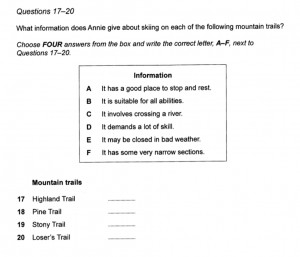
18:30 – 33:21 Practice 2: Cambridge Book 13, Test 3, Section 3
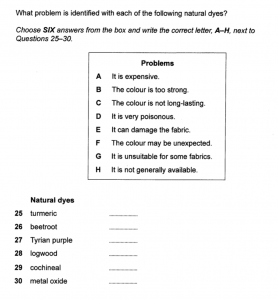
33:22 – 36:29 Type 2: A, B, C matching questions
These IELTS listening matching questions may look similar to the first as they also involve choosing an item from a box, but I think that they are totally different. This time IELTS is not testing that you can recognise descriptions and synonyms, but whether or not you can follow a conversation.
This may be to see if you can understand a final agreement between speakers, or a grammar point like the likelihood of an event happening. These questions require you to understand strings of sentences and to decide what the final outcome of a conversation is.
Crucially, this time you can use the items in the box more than once.
Again, we practice two questions here – both are from part three but one focuses on agreement and the other on understanding time clauses. Which one do you think is most difficult?
36:30 – 46:03 Practice 3: Cambridge Book 7, Test 4, Section 3
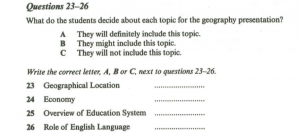
46: 04 – END Practice 4: Cambridge Book 7, Test 3, Section 3
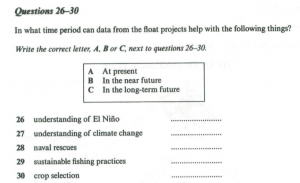
Would you like expert help you improving your Listening?
We offer a 5-day intensive course for IELTS test-takers every month that covers all aspects of listening, from how to approach every type of question, to how to use key words to follow a lecture, and avoid the distractors in Multiple Choice questions. Even better, with every course having no more than 8 students and being run by an ex-examiner, you will be getting personalised advice that is guaranteed to help you to improve your score.
Find out more about the course and how it can help you hit your target score here.
